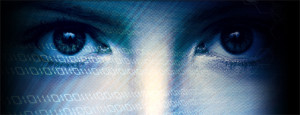
Facial recognition
On June 30, The Dickinson Press website posted Robb Jeffries’ article on the use of facial recognition by several state governments. Certain states, including North Dakota and Minnesota, use photos from driver’s licenses and other identification cards to compile databases that can be scanned with facial recognition software. Both states use the images to detect identification fraud.
Speaking for the Minnesota Department of Public Safety, Doug Neville said that in 2008 his agency searched about 11 million identification records to find duplicate photos. Their search flagged almost 1.3 million identification records. A review of the records revealed that many of these simply indicated people who had changed their name or twins. Nevertheless, the project led to the cancellation of nearly 10,000 identification cards.
ACLU senior policy analyst Jay Stanley stressed that a cautious and transparent use of facial recognition technology is vital for widespread acceptance. “When it comes to investigating specific crimes (with facial recognition technology), there needs to be checks and balances,” Stanley said. “This is something we see top to bottom in law enforcement, where they are making very profound decisions about what they do with this technology without input from the American public.”
Although facial recognition technology is often presented as a method approaching fingerprint ID in accuracy, this is not yet true. Facial expressions, photo angles and photo quality affect the outcome of facial recognition analysis.
Glenn Jackson, driver’s license director with the North Dakota Department of Transportation, told Jeffries that his agency’s software works best with head-on photos. “The system we have is very basic,” Jackson said. “It’s not like that ‘NCIS’ stuff where you can bring up half a cheek and know who it is.”

